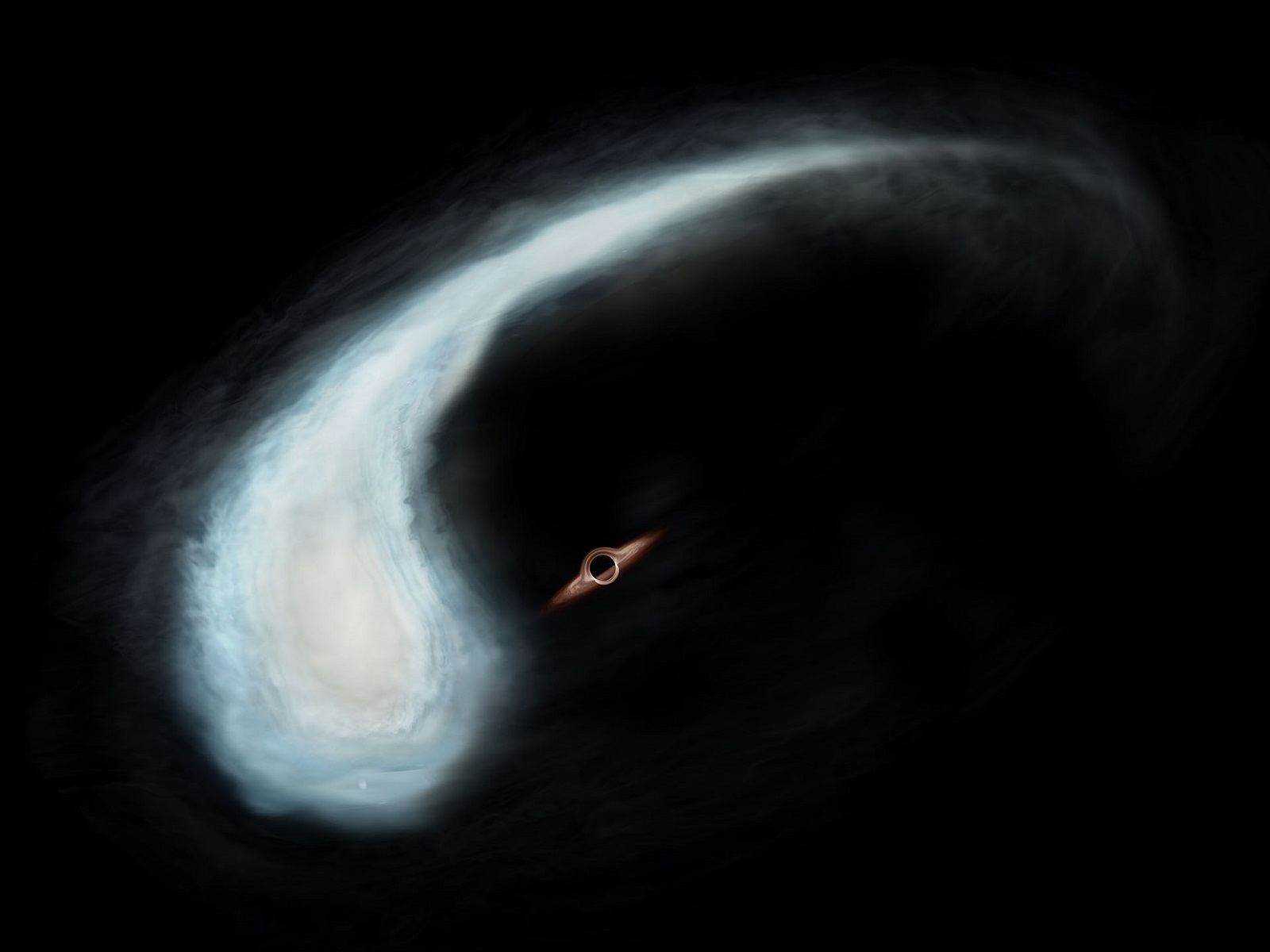In the 1930s, astrophysicists theorized that at the end of their life cycle, particularly massive stars would collapse, leaving behind remnants of infinite mass and density. As a proposed resolution to Einstein’s field equations (for his Theory of General Relativity), these objects came to be known as “black holes” because nothing (even light) could escape them. By the 1960s, astronomers began to infer the existence of these objects based on the observable effects they have on neighboring objects and their surrounding environment.
Despite improvements in instruments and interferometry (which led to the first images of M87 and Sagittarius A*), the study of black holes still relies on indirect methods. In a recent study, a team of Japanese researchers identified an unusual cloud of gas that appears to have been elongated by a massive, compact object that it orbits. Since there are no massive stars in its vicinity, they theorize that the cloud (nicknamed the “Tadpole” because of its shape) orbits a black hole roughly 27,000 light-years away in the constellation Sagittarius.
Continue reading “A Tadpole-Shaped Cloud of Gas is Whirling Around a Black Hole”
